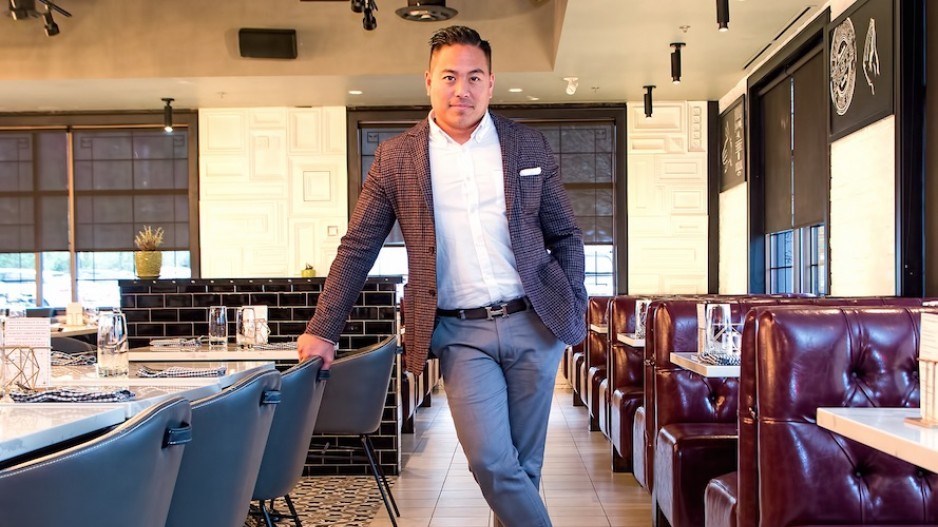Restaurant owners are using innovative strategies to recruit and retain workers as they grapple with B.C.’s 4.4% unemployment rate, which at the end of 2018 was the lowest among provinces by a full percentage point.
With the region’s notoriously high home prices, entry-level workers are now paid at least $15 per hour in many restaurant chains, and new hires often get as much as $18 per hour, said FDF Restaurant Brandz owner Frank Di Benedetto, whose company oversees 175 restaurants either as a franchisee or the franchisor, under brands such as Famoso Neapolitan Pizzeria, Ricky’s All Day Grill, Ricky’s Country Restaurants and Fatburger.
That’s significantly higher than B.C.’s $12.65-per-hour minimum wage, which on June 1 is set to rise to $13.85.
While competitive remuneration is key, as is recognizing good work, Di Benedetto also has another strategy to get the most out of his staff.
He takes advantage of the relatively short distance between some of his restaurants to ensure sufficient staffing when demand soars. Employees at his six Vancouver Fatburger locations have a primary restaurant and a secondary one. When events are held at Rogers Arena, for example, he borrows staff from other locations to ensure that the Fatburger next to Stadium-Chinatown station is adequately staffed, he said.
Attending job fairs and cultivating relationships with hospitality management teachers, who can steer students toward applying at FDF Restaurant Brandz, are some of the ways Di Benedetto finds employees.
“The shortage of workers in hospitality is also a demographic issue,” said Ian Tostenson, CEO of the British Columbia Restaurant & Food Services Association (BCRFA). “That’s primarily what’s going on in B.C. That’s not just for us but for other industries.”
Tostenson’s organization recently released a report that included research showing that for every three people in the restaurant industry who retire, only two people join the industry.
“If you look at B.C.’s labour forecast for the next 10 years, we need 900,000 workers in all industries. We’re going to fill 600,000 of those jobs – and these are round numbers – internally. We’re going to be short 300,000.”
He said the need for 300,000 workers will have to be met by either immigration or migration from the rest of Canada.
That was in part why Tostenson travelled to El Salvador along with Tap & Barrel Restaurants owner Daniel Frankel in August, to try to lay the groundwork for a bilateral temporary foreign worker program.
He called the resulting agreement a success and said a pipeline of “well-trained and well-vetted workers” could start flowing later this year for B.C. restaurant owners.
One section of the BCRFA report urges employers to offer extra incentives to attract workers – something that Joseph Richard Group (JRG) CEO Ryan Moreno has long done at his fast-growing company that has 14 public houses, five restaurants, three liquor stores and one hotel. JRG earlier this month bought Pitt Meadows’ Roosters Country Cabaret, which Moreno said he plans to renovate and reopen before the end of the year.
Some examples of Moreno’s incentives to retain workers include:
•providing staff with a free meal when they work a full shift and a reduced-cost meal for a shorter shift;
•providing staff with discounts on food and drinks at all of the company’s establishments on days off;
•providing friends and family of staff various undefined discounts when visiting the staff member’s restaurant;
•a benefit program for full-time workers that would be better than they would be able to get on their own;
•paying for training through the Red Seal program if the employee completes the training (employees may also get a gift, such as a knife set, if they pass the training); and
•a network of contra agreements with companies such as Audi, Nordstrom (NYSE:JWN) and Steve Nash Fitness World and Sports Club that enable employees to get various discounts.
Moreno said that his company has also started a program offering staff the chance to suggest logos for custom T-shirts, which the business would sell to employees at cost.
“It’s about engagement with the team,” he said. “If the perks we offer don’t resonate well with them – they don’t go to the gym or drive an Audi, whatever – maybe that is something they will see and say, ‘That’s funny,’ or ‘That’s cool,’ or ‘That makes me laugh.’” •




